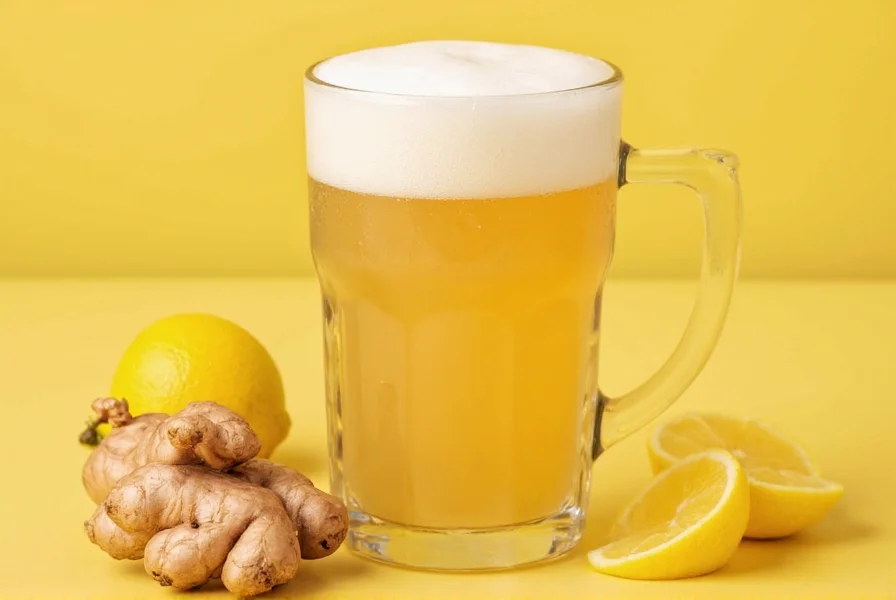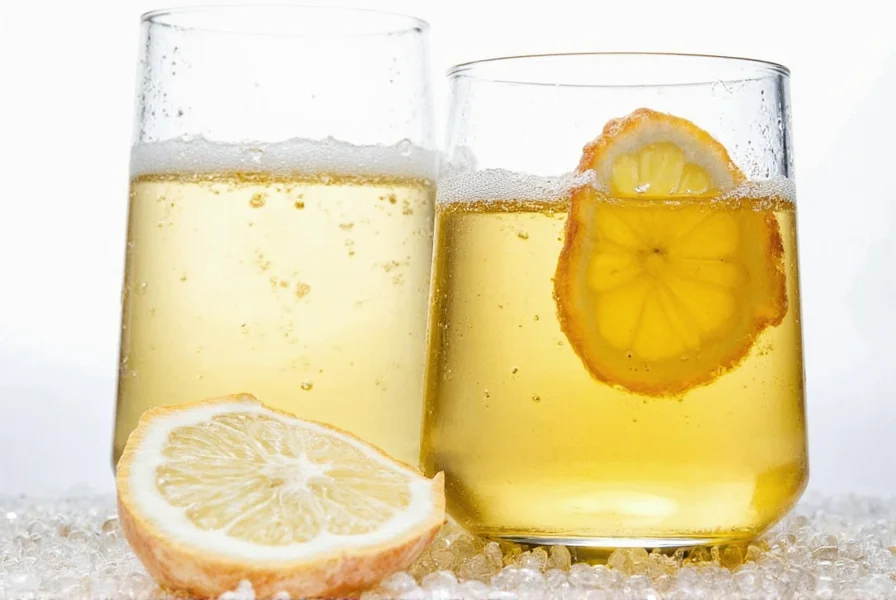When exploring natural flavored ginger ale varieties, consumers encounter a spectrum of options that transform the classic ginger beverage into versatile drink solutions. The foundation remains ginger root extract, but manufacturers and home producers add complementary flavors during production to create distinctive taste experiences that serve both culinary and potential wellness purposes.
Understanding Flavored Ginger Ale Composition
The production process for flavored ginger ale vs regular ginger ale involves similar base ingredients—carbonated water, sweetener, and ginger extract—but diverges at the flavoring stage. Traditional ginger ale emphasizes ginger's spicy warmth with minimal additional flavors, while flavored versions incorporate secondary flavor components that harmonize with ginger's natural profile.
Common flavor enhancements include:
- Citrus variants (lemon, lime, orange)
- Berry infusions (cranberry, raspberry)
- Spice combinations (cinnamon, cardamom)
- Tropical additions (pineapple, mango)
- Herbal accents (mint, lemongrass)
| Flavor Type | Common Ingredients | Best Applications |
|---|---|---|
| Citrus-Infused | Lemon, lime, or orange zest/oil | Cocktails, nausea relief, afternoon refreshment |
| Berry-Enhanced | Cranberry, raspberry, or blackberry extract | Mocktails, holiday beverages, digestive aid |
| Spice-Infused | Cinnamon, cardamom, or clove | Cold remedies, winter beverages, cooking |
Health Applications and Evidence
While not a medical treatment, many consumers seek flavored ginger ale for digestive health due to ginger's well-documented properties. Research indicates ginger contains active compounds like gingerols that may support digestive comfort. The carbonation in ginger ale can also provide soothing relief for some stomach discomfort.
When considering how to use flavored ginger ale for nausea, experts suggest:
- Sipping chilled ginger ale slowly during bouts of nausea
- Choosing varieties with higher ginger content (check ingredient lists)
- Opting for less sugary options when possible
- Using as a base for electrolyte-replenishing beverages
It's important to note that while ginger shows promise in supporting digestive wellness, flavored ginger ale should not replace medical treatment for serious conditions. The sugar content in commercial varieties also warrants moderation.

Culinary and Beverage Applications
Chefs and mixologists increasingly utilize best citrus flavored ginger ale options for their complex flavor profiles. The ginger base provides spicy warmth while additional flavors create nuanced taste experiences ideal for:
- Non-alcoholic mocktails (ginger lemonade, berry fizz)
- Cocktail mixers (replacing traditional ginger ale in Moscow Mules)
- Marinades for proteins (especially salmon and chicken)
- Baking applications (ginger cake, spice cookies)
- Simple syrup bases for flavored desserts
Selecting Quality Products
When evaluating commercial natural flavored ginger ale varieties, consider these factors:
- Ginger content: Look for "real ginger" or "ginger root extract" near the beginning of ingredients
- Sweetener type: Options range from high-fructose corn syrup to cane sugar to natural alternatives
- Flavor source: "Natural flavors" versus specific named ingredients ("lemon oil" vs "natural citrus flavor")
- Carbonation level: Personal preference affects enjoyment and potential soothing properties
Homemade Flavored Ginger Ale Preparation
Creating homemade flavored ginger ale recipes allows complete control over ingredients and flavor intensity. The basic process involves:
- Preparing ginger syrup by simmering grated ginger with water and sweetener
- Straining and cooling the syrup
- Adding complementary flavor elements (citrus zest, berry puree, spices)
- Combining with carbonated water
- Chilling before serving
For a simple citrus-ginger version, add lemon or lime zest during the syrup preparation stage. Berry variations work well with lightly mashed fresh berries added after cooling. Spice-infused versions benefit from adding whole spices during simmering, then removing before carbonation.
Considerations for Optimal Use
Understanding the differences between products helps maximize benefits. Traditional ginger ale typically contains less actual ginger than specialty brands marketed for wellness purposes. When seeking potential digestive support, look for products with higher ginger concentration rather than those where ginger plays a minor flavor role.
Temperature matters too—chilled ginger ale often provides more soothing relief for digestive discomfort than room-temperature versions. The carbonation level can also affect how the beverage settles in the stomach, with some people preferring flat ginger ale for certain applications.
Frequently Asked Questions
What makes ginger ale 'flavored' versus regular ginger ale?
Flavored ginger ale contains additional natural or artificial flavor components beyond the traditional ginger profile. While regular ginger ale focuses primarily on ginger's spicy warmth, flavored varieties incorporate complementary tastes like citrus, berry, or spices that create distinctive taste experiences while maintaining the ginger base.
Does flavored ginger ale offer the same potential health benefits as traditional ginger ale?
The potential digestive benefits primarily come from ginger content, not added flavors. Some flavored varieties maintain sufficient ginger concentration to offer similar potential benefits, while others prioritize the additional flavors over ginger intensity. Check ingredient lists for ginger's position—products listing ginger near the beginning typically contain more actual ginger.
Can I use flavored ginger ale for nausea relief like traditional ginger ale?
Yes, but effectiveness depends on ginger concentration. Citrus-flavored varieties often work well for nausea relief as the ginger base remains prominent while citrus notes can enhance palatability. For best results, choose varieties with higher ginger content and consume chilled, sipping slowly rather than drinking quickly.
How do I make homemade flavored ginger ale with natural ingredients?
Create ginger syrup by simmering grated ginger with water and sweetener (1:1 ratio), then strain. Add complementary flavors like citrus zest, mashed berries, or whole spices during the last 5 minutes of simmering. Cool completely, then mix with carbonated water (typically 1 part syrup to 3 parts carbonation). Chill before serving for optimal flavor development and carbonation retention.
What should I look for when choosing a quality flavored ginger ale?
Examine the ingredient list for ginger's position (higher indicates more ginger), type of sweetener used, and specific flavor sources. Products listing 'ginger root extract' or 'real ginger' near the beginning typically contain more actual ginger. For potential wellness applications, choose varieties with lower sugar content and recognizable flavor ingredients rather than vague 'natural flavors.'











 浙公网安备
33010002000092号
浙公网安备
33010002000092号 浙B2-20120091-4
浙B2-20120091-4